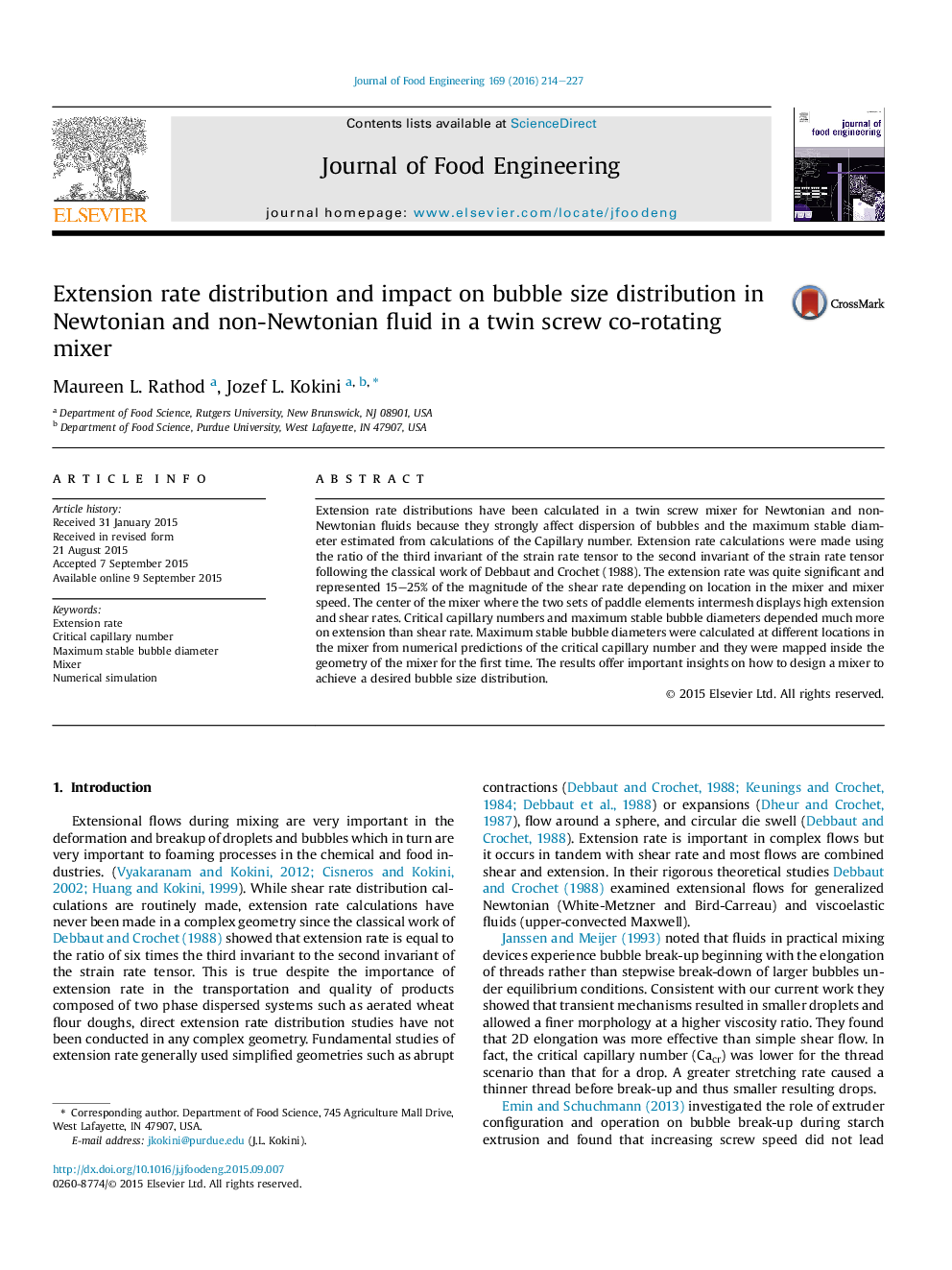| Article ID | Journal | Published Year | Pages | File Type |
|---|---|---|---|---|
| 6664975 | Journal of Food Engineering | 2016 | 14 Pages |
Abstract
Extension rate distributions have been calculated in a twin screw mixer for Newtonian and non-Newtonian fluids because they strongly affect dispersion of bubbles and the maximum stable diameter estimated from calculations of the Capillary number. Extension rate calculations were made using the ratio of the third invariant of the strain rate tensor to the second invariant of the strain rate tensor following the classical work of Debbaut and Crochet (1988). The extension rate was quite significant and represented 15-25% of the magnitude of the shear rate depending on location in the mixer and mixer speed. The center of the mixer where the two sets of paddle elements intermesh displays high extension and shear rates. Critical capillary numbers and maximum stable bubble diameters depended much more on extension than shear rate. Maximum stable bubble diameters were calculated at different locations in the mixer from numerical predictions of the critical capillary number and they were mapped inside the geometry of the mixer for the first time. The results offer important insights on how to design a mixer to achieve a desired bubble size distribution.
Related Topics
Physical Sciences and Engineering
Chemical Engineering
Chemical Engineering (General)
Authors
Maureen L. Rathod, Jozef L. Kokini,
